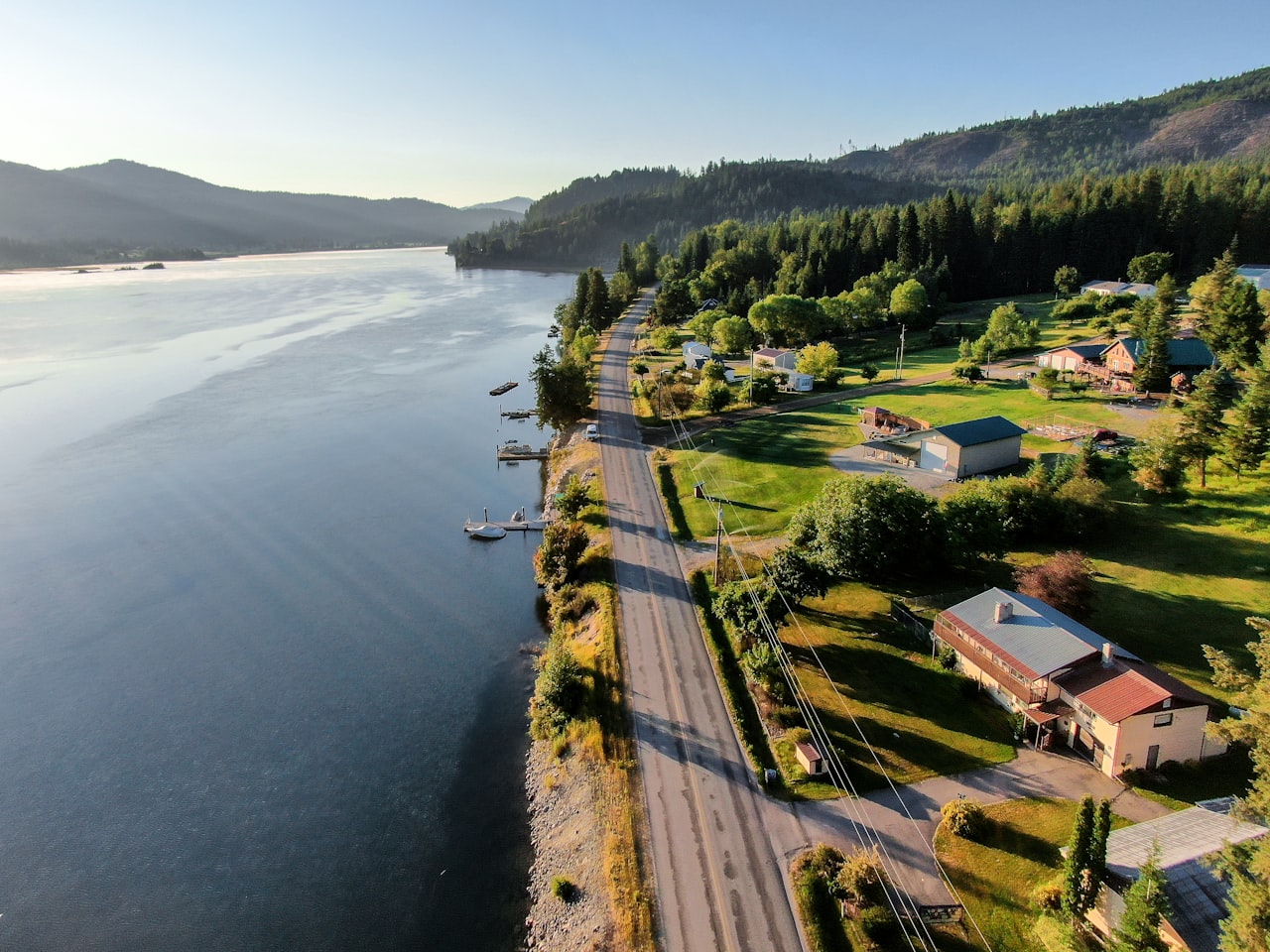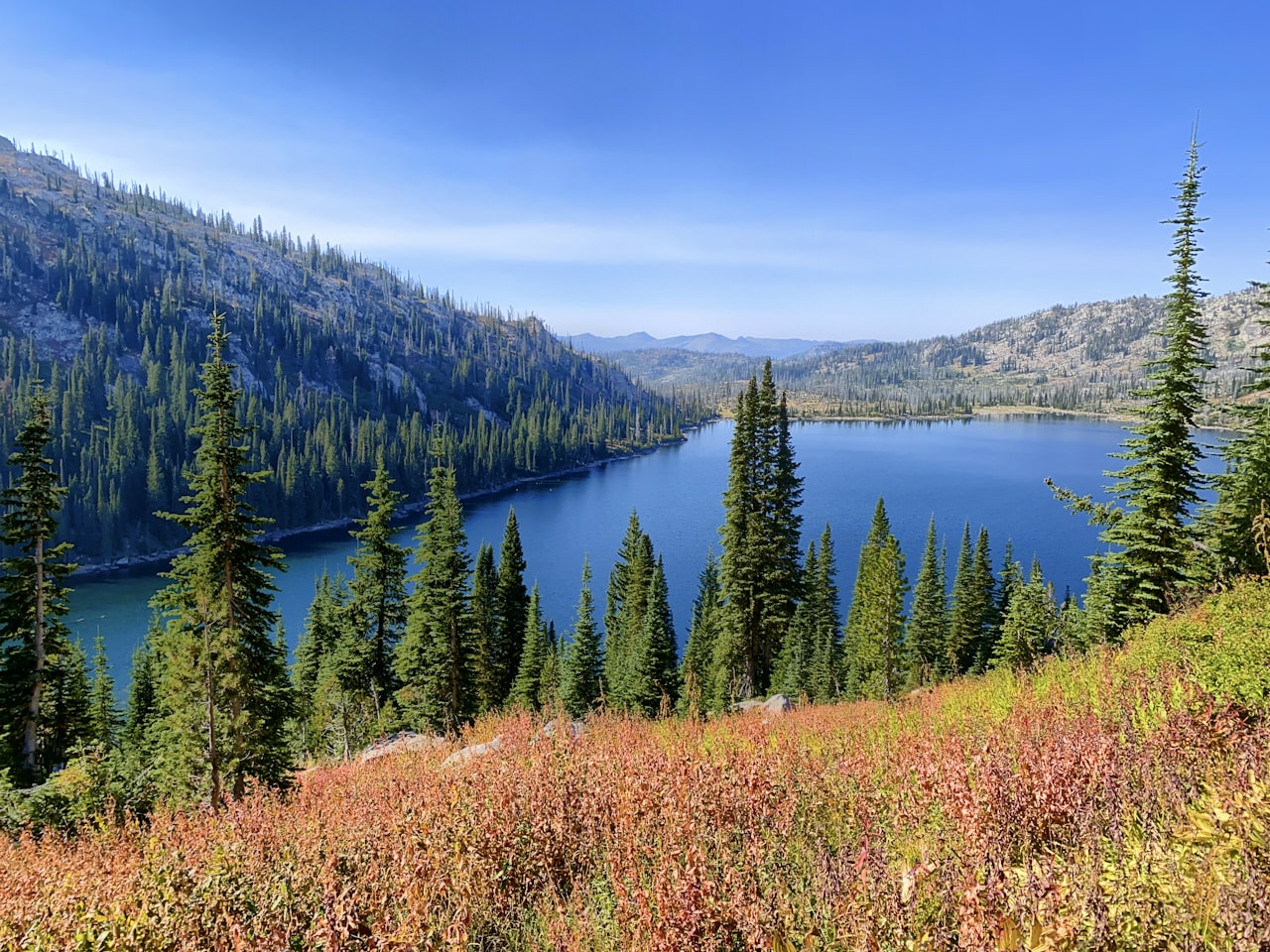Resources and Information
Couer d'Alene and Surrounding area



Coeur d’Alene (pronounced: Korr de-layn) is the largest city & county seat of Kootenai (pronounced: koot-nee) County Idaho. Coeur d’Alene is the second largest metropolitan area in Idaho and is the largest city in the northern panhandle of Idaho. The city is located about 30 miles east of the larger Spokane, Washington. The city is located on the Northern shore of Lake Coeur d’Alene. Locally, Coeur d’Alene is known as the “Lake City,” or simply called by its initials: “CDA.”
The city is named after the Coeur d’Alene People, a tribe of American Indians who lived along the rivers & lakes of the region when discovered by French Canadian fur traders in the late 18th & early 19th century. The name Coeur d’Alene translated into English means Heart of an Awl, a reflection of the perception of the tribe’s traders as very tough businessmen.
Geographically, Coeur d’Alene is approximately 16 square miles of land and sits on the western edge of the Coeur d’Alene National Forest. The city is surrounded by forest, which contains several lakes & campgrounds. Stretching 25 miles in length, Lake Coeur d’Alene attracts substantial tourism and is also located near two major ski resorts, Silver Mountain Resort to the east in Kellogg & Schweitzer Mountain Ski Resort to the north in Sandpoint.

Coeur d’Alene boasts a true four-season climate. Spring tends to range from March – June, Summer is June – September, Fall is from September to December and Winter usually ranges from December – March. Temperatures exceed 90°F approximately 22 days per year, occasionally reaching 100°F, while conversely, there may be several nights below 0°F. Snowfall averages 46” per year with precipitation generally lowest in summer. The frost-free season runs about 120 days from mid-May to mid-September.
Art on the Green
Art Walk
Car d’Lane
Centennial Trail
The Chocolate Affair
Coeur d’Alene Blues Festival
Coeur d’Alene Casino
Coeur d’Alene Marathon
Coeur d’Alene Resort
Coeur d’Alene Summer Theatre
Coeur d’Fondo
Dog d’Alene
Downtown Coeur d’Alene Association
Farmers Market
Festival of Trees
Greyhound Park Event Center
Hayden Days
Holiday Lights Parade
Ironman
Julyamsh
Kootenai County Fairgrounds
Kootenai County Tourism
Kroc Center
Lake Coeur d’Alene Cruises
Music Walk
Oktoberfest
Polar Bear Plunge
Race the River Triathlon
Schweitzer Ski Resort
Silver Mountain Resort
Silver Rapids Indoor Water Park
Silverwood Theme & Water park
Spokane Arena
Spokane Chiefs Hockey
Triple Play Family Fun
Wine Extravaganza
Wooden Boat Show
Coeur d’ Alene Churches
Lake City Community Church | 676-0632
The Altar Church of Coeur d’ Alene | 664-1453
Trinity Church | 615-5075
First Presbyterian Church of Coeur d’ Alene | 667-8446
Coeur d’ Alene Worship Center | 667-6852
Coeur d’ Alene Bible Church | 664-4883
Heart Of the City Church | 665-7808
Church of Jesus Christ of LDS | 664-4991
Coeur d’ Alene Church of the Nazarene | 667-3543
St Pius X Catholic Church | 765-5108
Unity Church of North Idaho | 664-1125
Community United Methodist Church | 765-8800
Church of Christ | 664-2458
Gateway Christian Fellowship | 667-8527
Foundation Baptist Church | 755-1841
St Thomas Catholic Church | 664-9259
Canvas Church | 667-5481
House of Faith | 664-5440
Christ the King Lutheran | 664-9231
St Joan of Arc Roman Catholic | 660-6036
Peace Lutheran Church | 765-0727
Cda Seventh-Day Adventist Church | 664-5473
Cda Second Ward | 765-2673
Emmanuel Baptist Church | 664-3862
Lake City Light House | 665-0008
Church of Jesus Christ of LDS | 664-1818
Candlelight Christian Fellowship | 772-7755
Christian Science Society | 667-4669
Wesleyan Church / House of Faith | 664-5440
Dalton Gardens Church | 772-0541
St. Luke’s Episcopal Church | 664-5533
Potter’s House Christian Church | 676-9660
Kingdom Hall of Jehova’s Witnesses | 664-6941
First Baptist Church | 667-5429
Family Life Center-Foursquare Church | 664-8745
Lifesource Community Church | 765-7615
Mountain Lake Bible Church | 664-9083
Grace Bible Church | 772-2717
Anthem Church | 667-1177
Hayden Churches
Anthem Friends Church | 772-7544
Hayden Bible Church | 772-2511
Family Worship Center | 772-4267
Cornerstone Baptist Church | 772-9190
Hayden Bible Fellowship | 772-6541
True North Church | 772-6397
St. Mark’s Lutheran Church | 772-2372
Faith Presbyterian Church | 772-5251
River of Life Friends Church | 773-5014
St. Mark’s Lutheran Church | 772-2372
NorthStar Baptist | 762-7600
Landmark United Pentecostal | 762-4801
Hayden Lake SDA Church | 762-5718
Rathdrum Churches
New Life Community Church | 687-3606
Rathdrum Bible Church | 687-0303
Calvary Rathdrum | 687-4341
My Immaculate Queen Church | 687-3104
First Baptist Church- Rathdrum / New Beginnings Church | 687-1803
Shepherd of the Hills Lutheran | 687-1809
With the passion, dedication, and resources to help her clients reach their buying and selling goals. With you every step of the way.